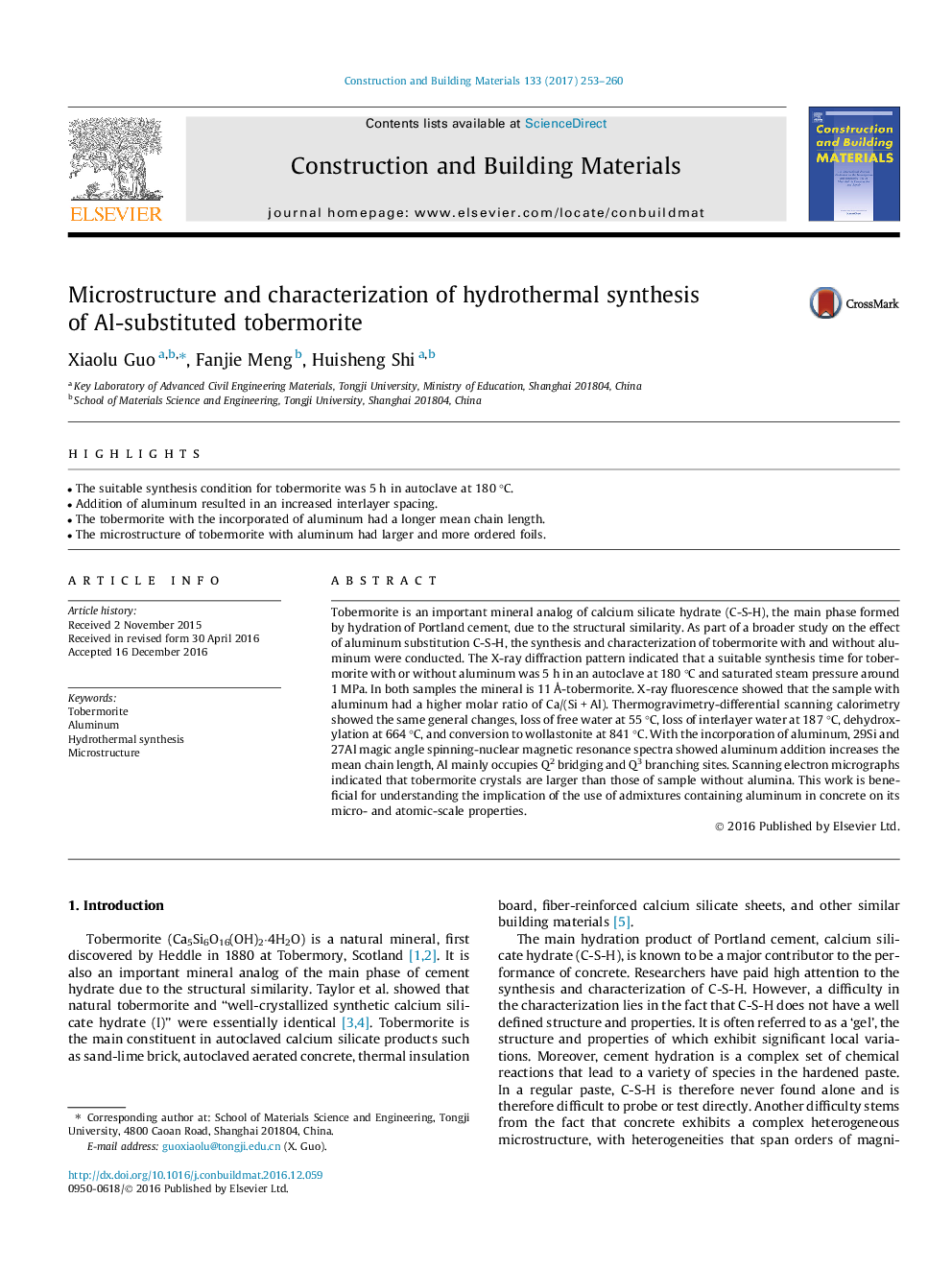| Article ID | Journal | Published Year | Pages | File Type |
|---|---|---|---|---|
| 4913772 | Construction and Building Materials | 2017 | 8 Pages |
Abstract
Tobermorite is an important mineral analog of calcium silicate hydrate (C-S-H), the main phase formed by hydration of Portland cement, due to the structural similarity. As part of a broader study on the effect of aluminum substitution C-S-H, the synthesis and characterization of tobermorite with and without aluminum were conducted. The X-ray diffraction pattern indicated that a suitable synthesis time for tobermorite with or without aluminum was 5 h in an autoclave at 180 °C and saturated steam pressure around 1 MPa. In both samples the mineral is 11 Ã
-tobermorite. X-ray fluorescence showed that the sample with aluminum had a higher molar ratio of Ca/(Si + Al). Thermogravimetry-differential scanning calorimetry showed the same general changes, loss of free water at 55 °C, loss of interlayer water at 187 °C, dehydroxylation at 664 °C, and conversion to wollastonite at 841 °C. With the incorporation of aluminum, 29Si and 27Al magic angle spinning-nuclear magnetic resonance spectra showed aluminum addition increases the mean chain length, Al mainly occupies Q2 bridging and Q3 branching sites. Scanning electron micrographs indicated that tobermorite crystals are larger than those of sample without alumina. This work is beneficial for understanding the implication of the use of admixtures containing aluminum in concrete on its micro- and atomic-scale properties.
Related Topics
Physical Sciences and Engineering
Engineering
Civil and Structural Engineering
Authors
Xiaolu Guo, Fanjie Meng, Huisheng Shi,
